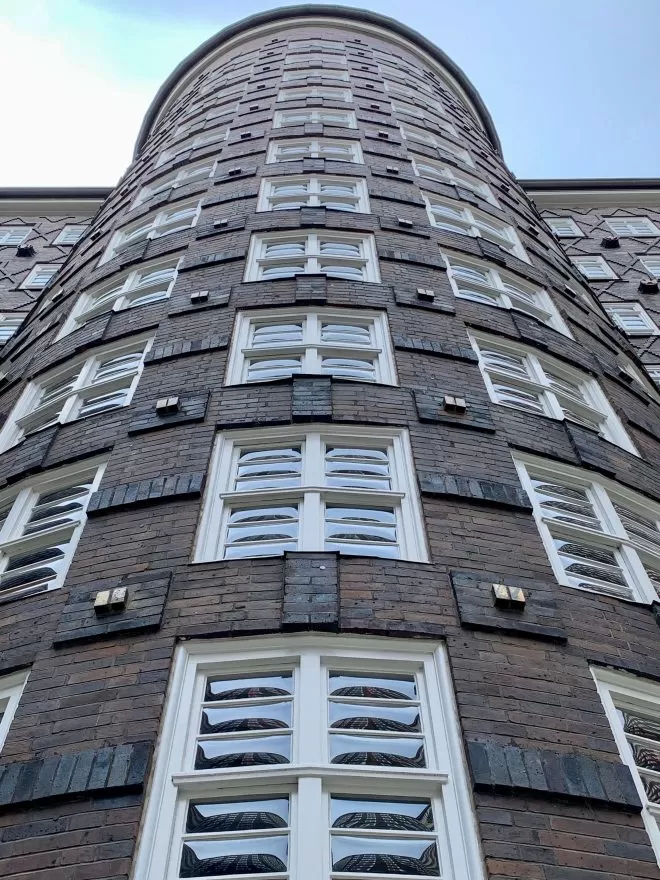1927 – 1928 (central part), 1930 – 1932 (west wing), 1939 – 1943 (east wing)
Architects: Fritz Höger, Hans and Oskar Gerson
Burchardstraße 6-14, Altstädter Straße 1-8, Hamburg
Sprinkenhof is a nine-story office building (Kontorhaus) in the brick expressionist style and was built in three construction phases between 1927 and 1943 to plans by architects Fritz Höger and the Gerson brothers.
It is located in the Kontorhaus district of Hamburg, close to the Chilehaus, with the Springeltwiete running through the inner courtyard between Burchard and Altstädter Straße.
Sprinkenhof is named after Johann Sprink, who acquired the property from the cathedral chapter in 1384.
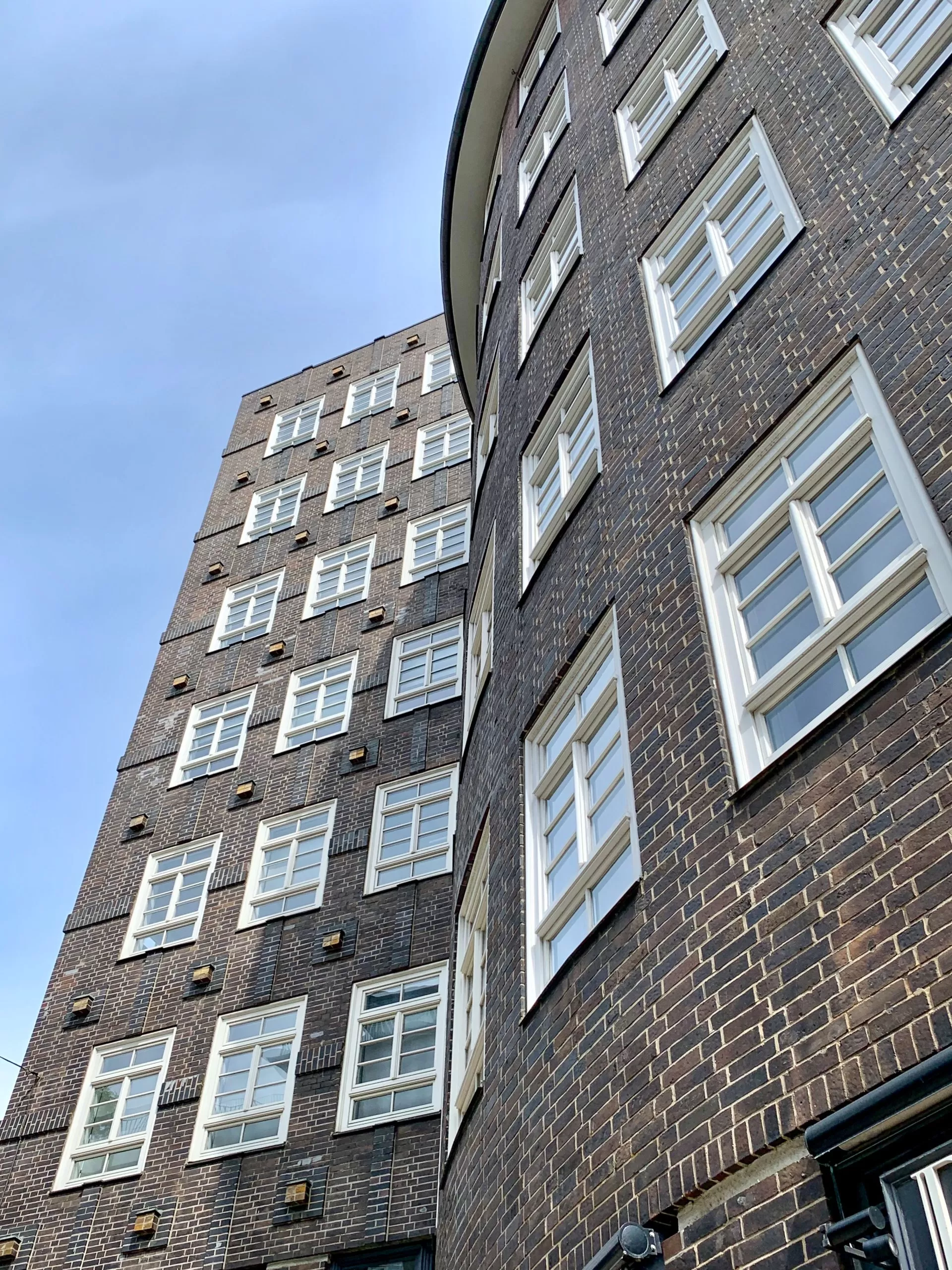
Sprinkenhof, 1927-1928. Architects: Fritz Höger, Hans and Oskar Gerson. Photo: Daniela Christmann
Building
With 52,000 square meters of floor space, the flat-roofed steel skeleton building was at times one of the largest office buildings in Europe.
Evenly spaced windows emphasize the horizontal lines of the central building’s perforated facade.
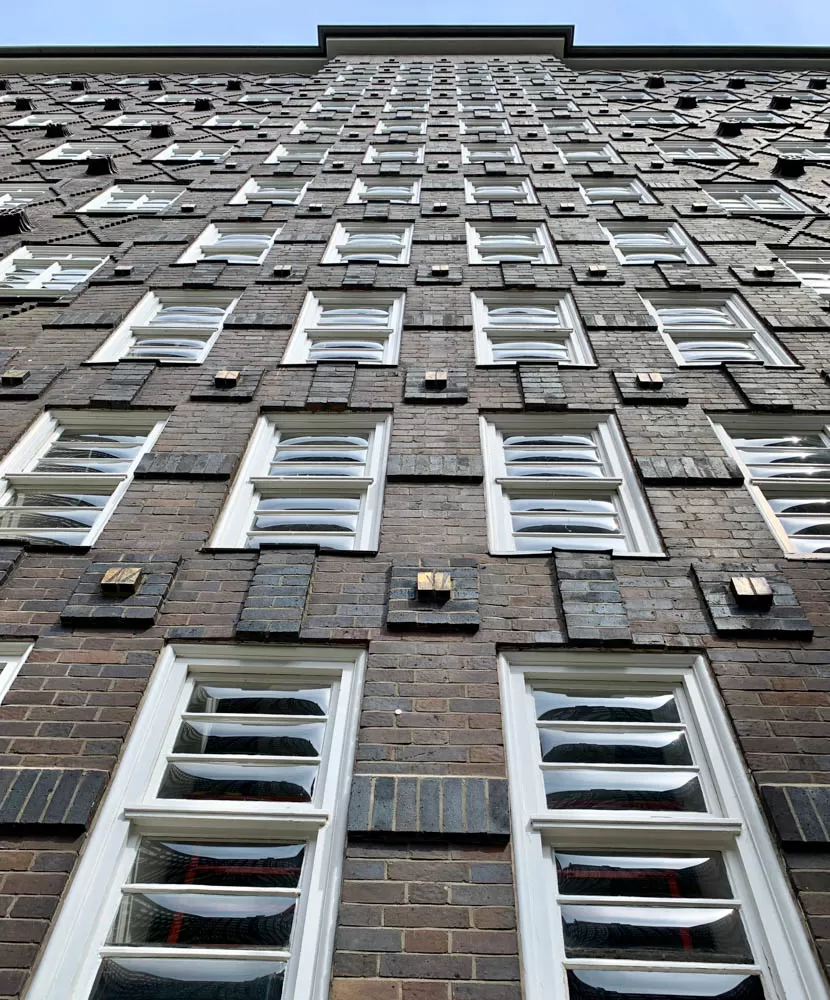
Sprinkenhof, 1927-1928. Architects: Fritz Höger, Hans and Oskar Gerson. Photo: Daniela Christmann
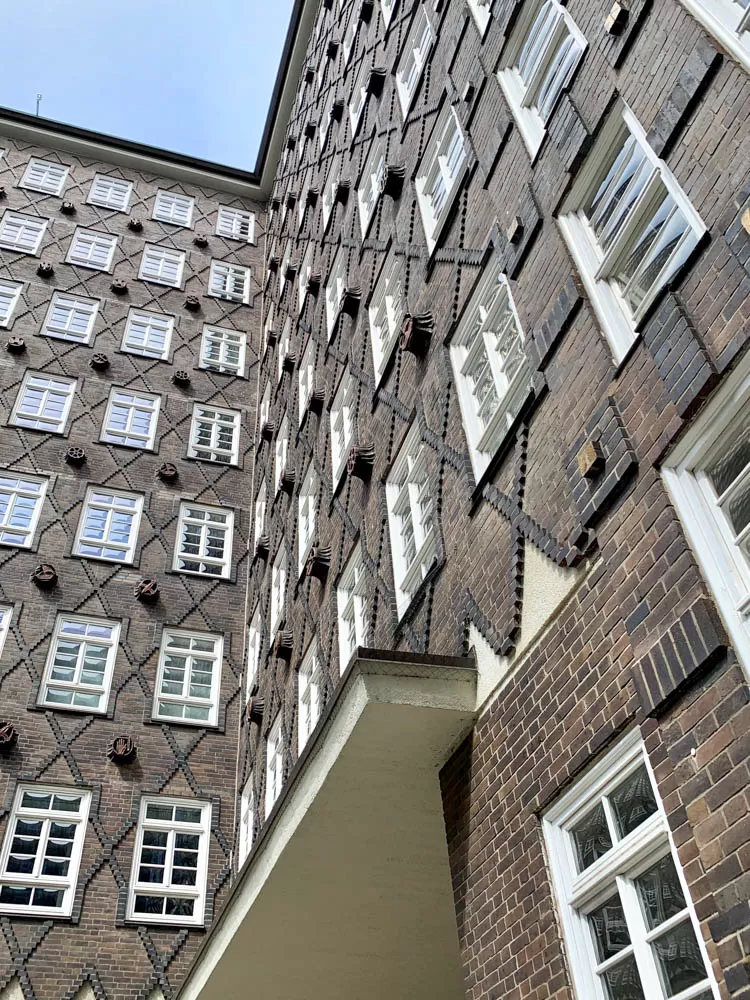
Sprinkenhof, 1927-1928. Architects: Fritz Höger, Hans and Oskar Gerson. Photo: Daniela Christmann
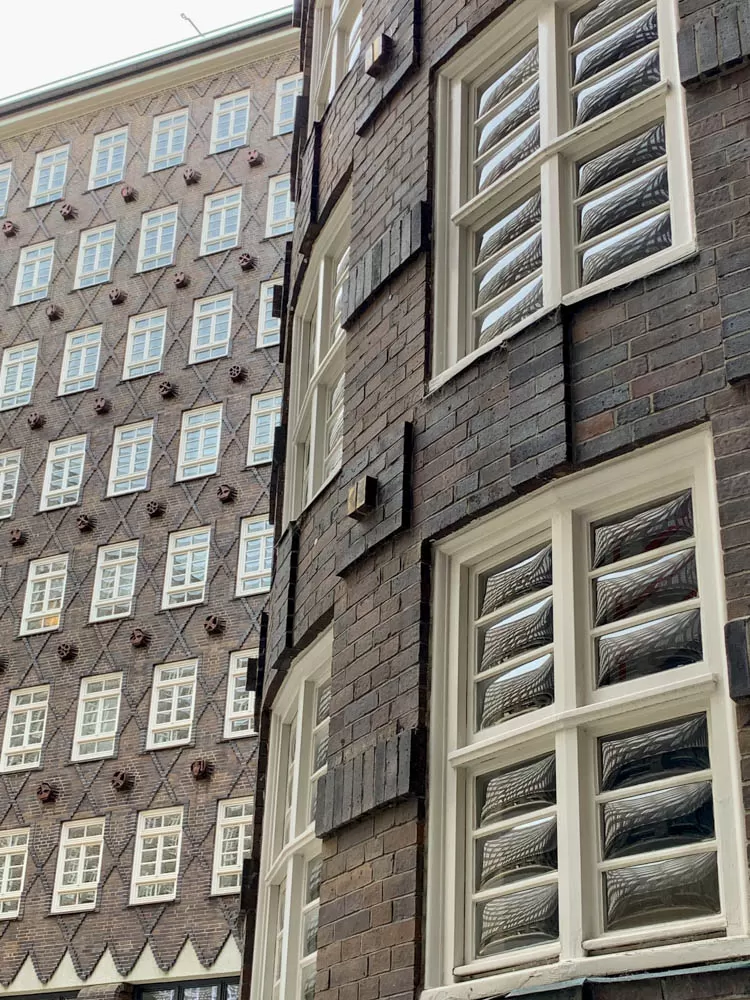
Sprinkenhof, 1927-1928. Architects: Fritz Höger, Hans and Oskar Gerson. Photo: Daniela Christmann
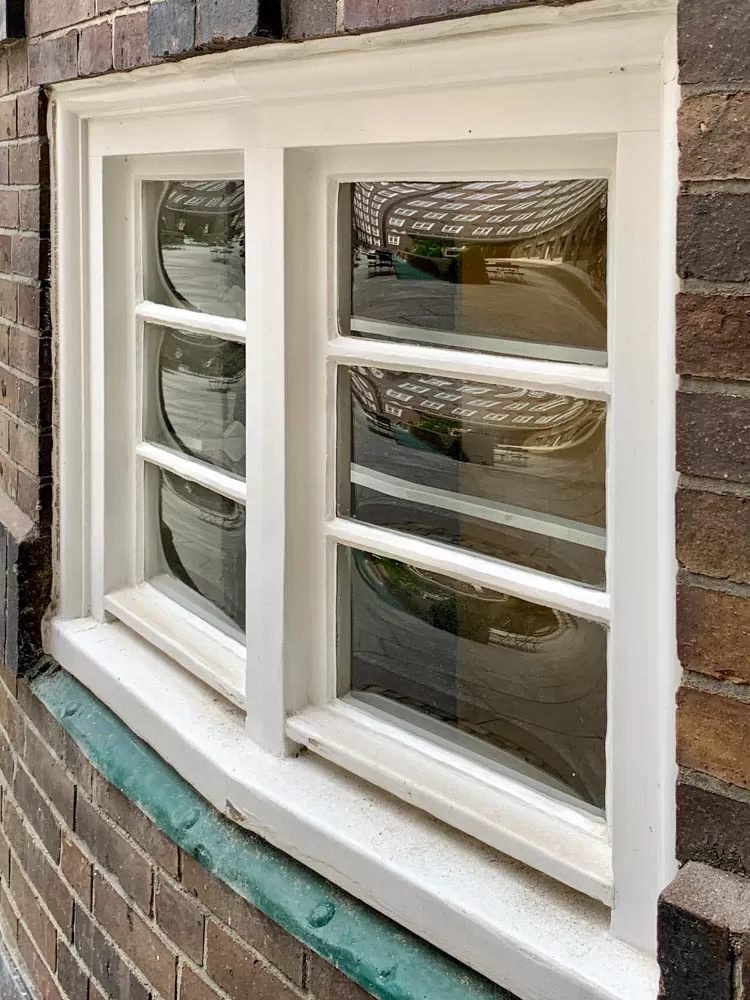
Sprinkenhof, 1927-1928. Architects: Fritz Höger, Hans and Oskar Gerson. Photo: Daniela Christmann
Facade
A diamond-shaped brick surface pattern of Oldenburg clinker bricks, with bands of slate-gray stones, characterizes the facade of the original freestanding nine-story cube.
Red glazed round ceramic knobs with symbols of commerce and seafaring on the front are evenly distributed on the surface.
The terracotta decoration was created according to designs by Ludwig Kunstmann. Other works of the sculptor with symbols of trade and craftsmanship complete the facade decoration. The ceramics on the facade were manufactured by Richard Blumenfeld AG in Velten.
The structure of the cube’s façade was inspired by a design by the Gerson brothers from 1921 for a heroes’ memorial hall at the Ohlsdorf cemetery, for which the architects had also proposed a cube covered with a diamond pattern.
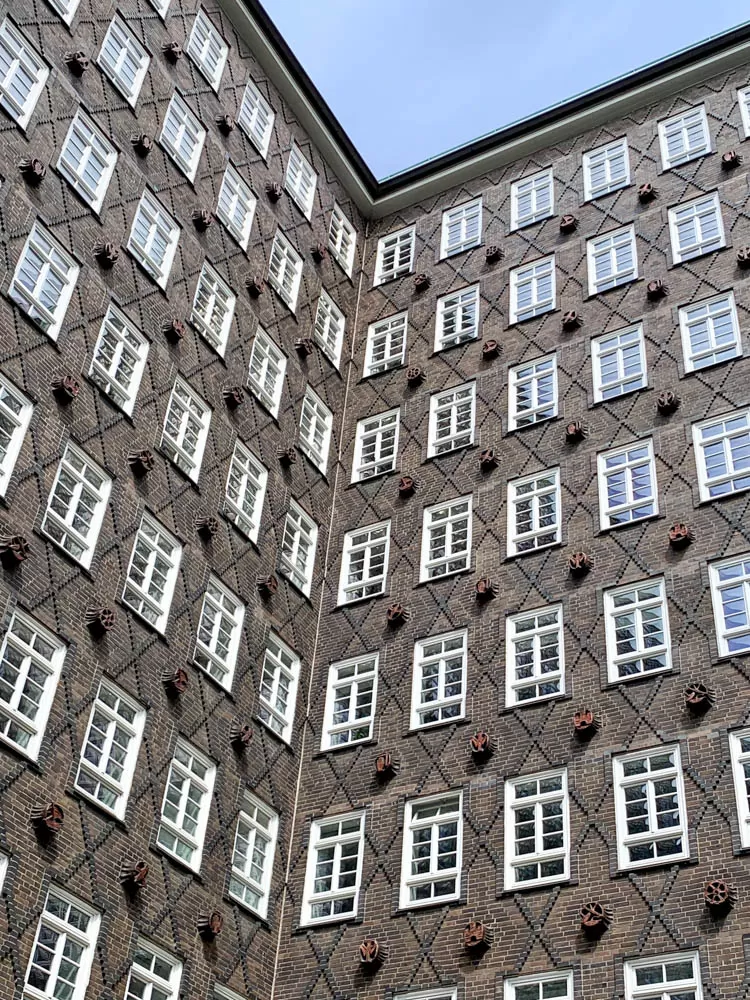
Sprinkenhof, 1927-1928. Architects: Fritz Höger, Hans and Oskar Gerson. Photo: Daniela Christmann
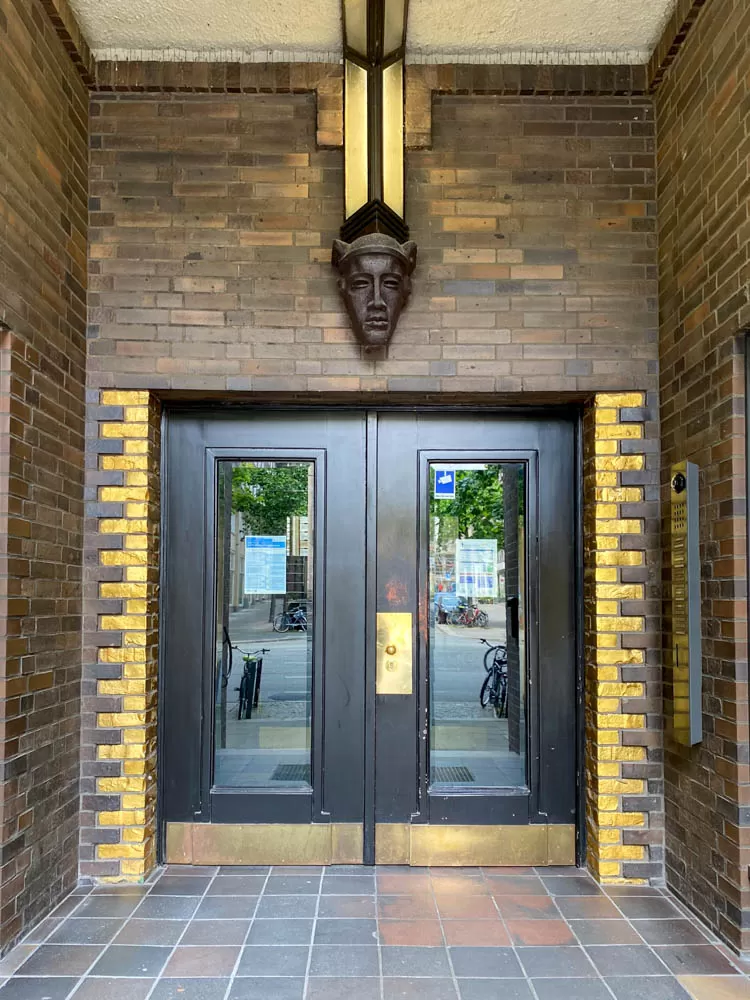
Sprinkenhof, 1927-1928. Architects: Fritz Höger, Hans and Oskar Gerson. Photo: Daniela Christmann
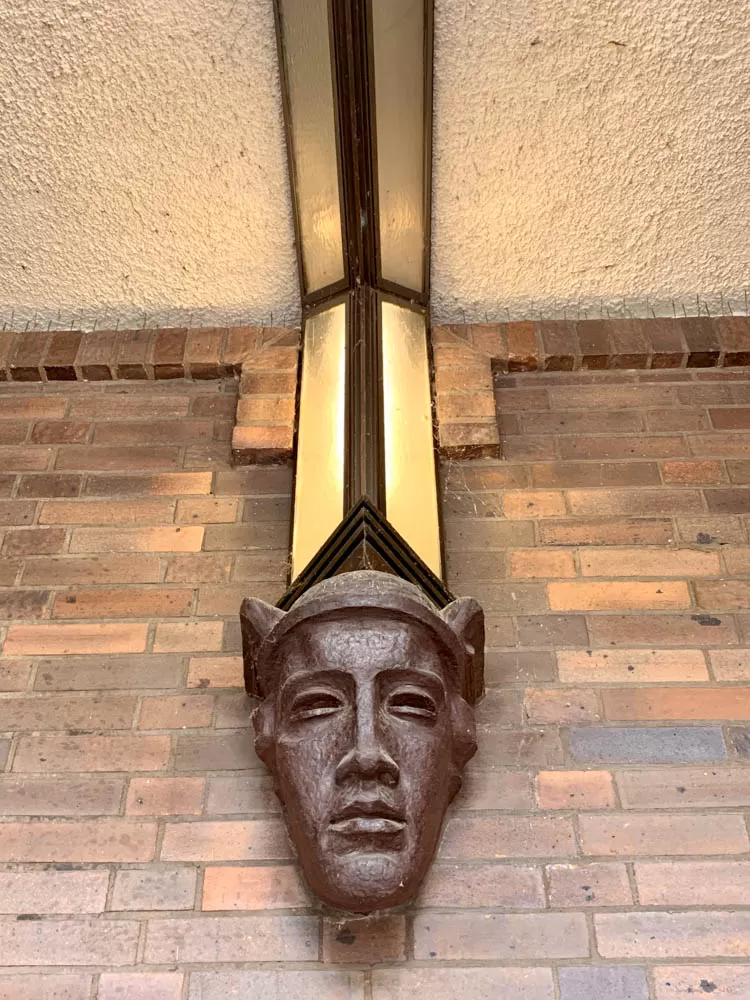
Sprinkenhof, 1927-1928. Architects: Fritz Höger, Hans and Oskar Gerson. Photo: Daniela Christmann
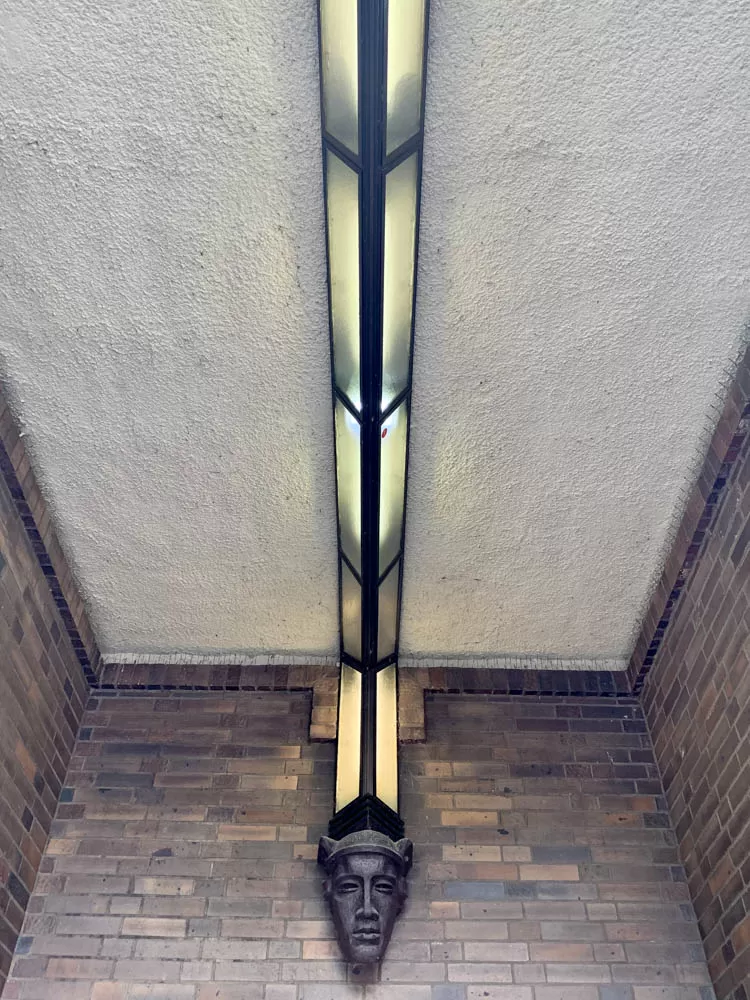
Sprinkenhof, 1927-1928. Architects: Fritz Höger, Hans and Oskar Gerson. Photo: Daniela Christmann
Gewerbehof
A ceramic with a fist carrying a hammer is located next to the entrance to Springeltwiete. It refers to the former Gewerbehof with craft enterprises.
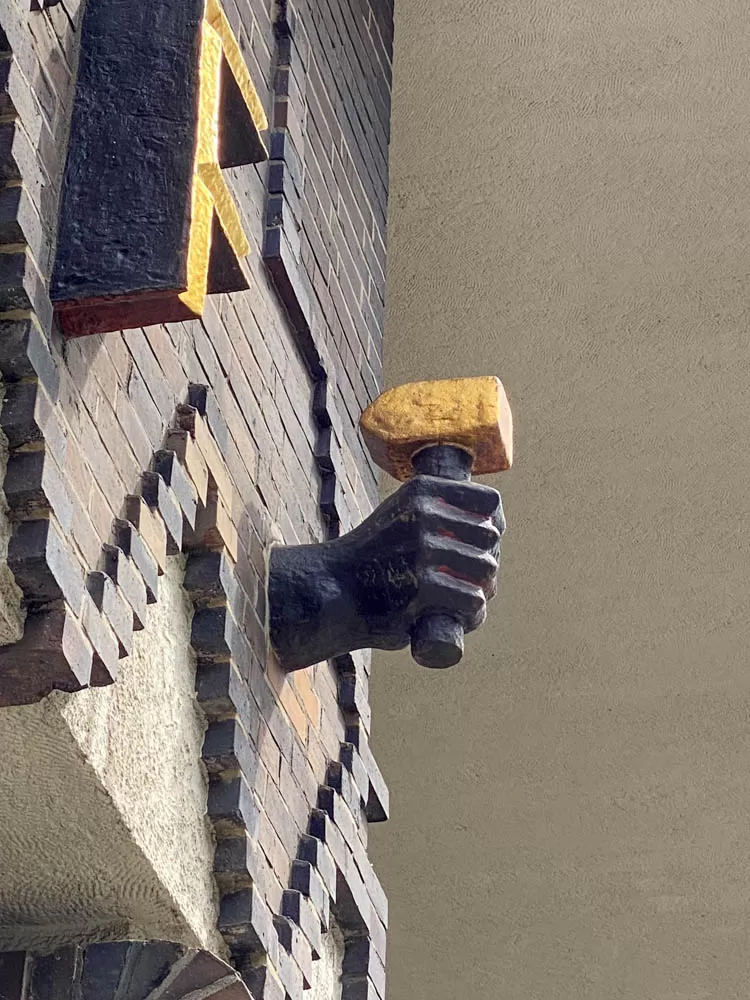
Sprinkenhof, 1927-1928. Architects: Fritz Höger, Hans and Oskar Gerson. Photo: Daniela Christmann
Stair tower
In the circular stair tower of the Springeltwietenhof, a cantilevered spiral staircase rises up the outside wall to the courtyard.
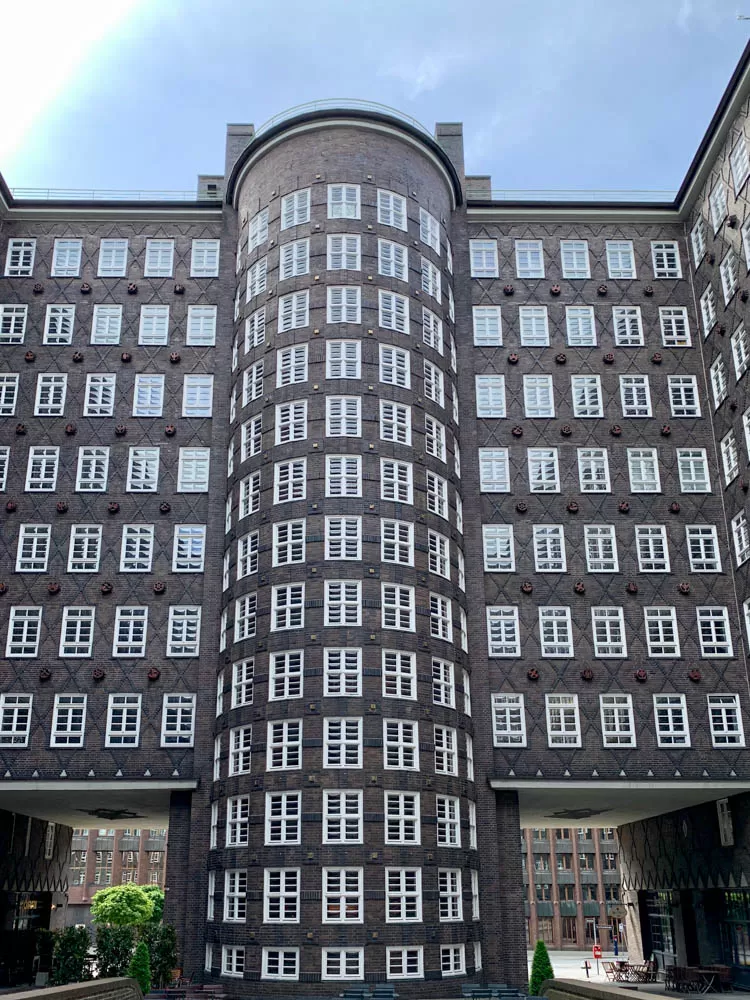
Sprinkenhof, 1927-1928. Architects: Fritz Höger, Hans and Oskar Gerson. Photo: Daniela Christmann
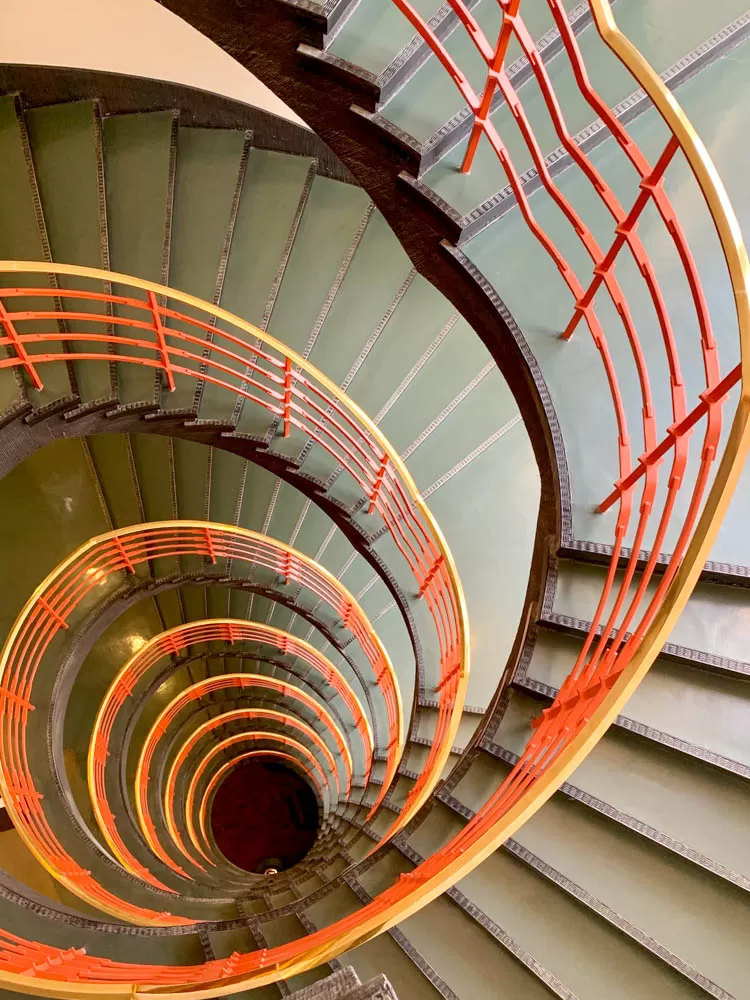
Sprinkenhof, 1927-1928. Architects: Fritz Höger, Hans and Oskar Gerson. Photo: Daniela Christmann
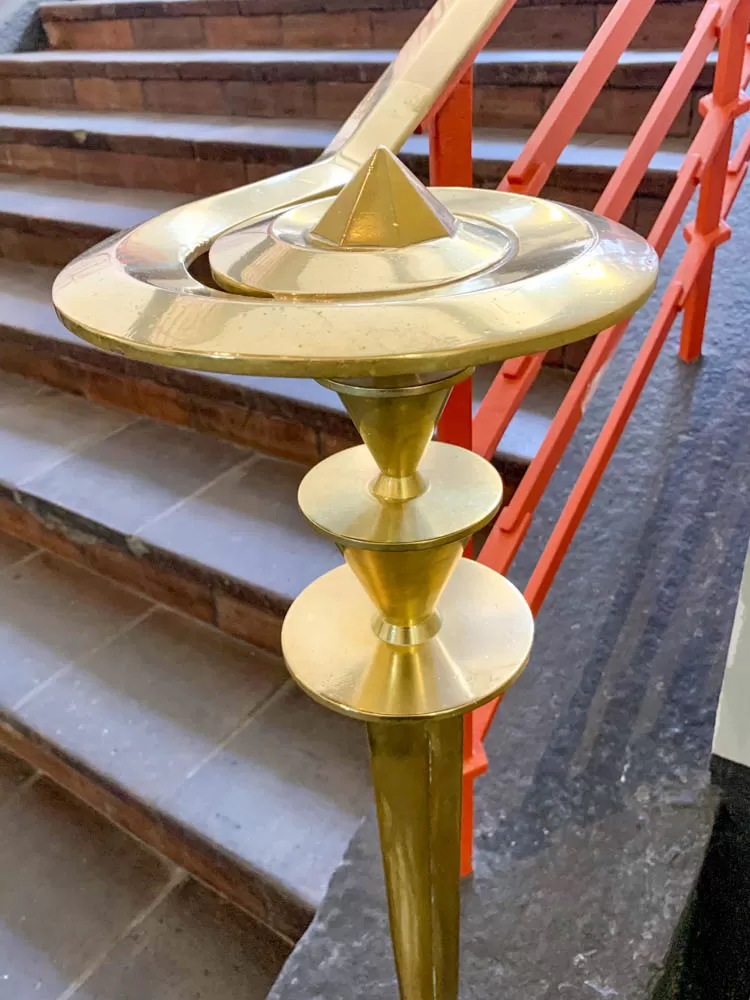
Sprinkenhof, 1927-1928. Architects: Fritz Höger, Hans and Oskar Gerson. Photo: Daniela Christmann
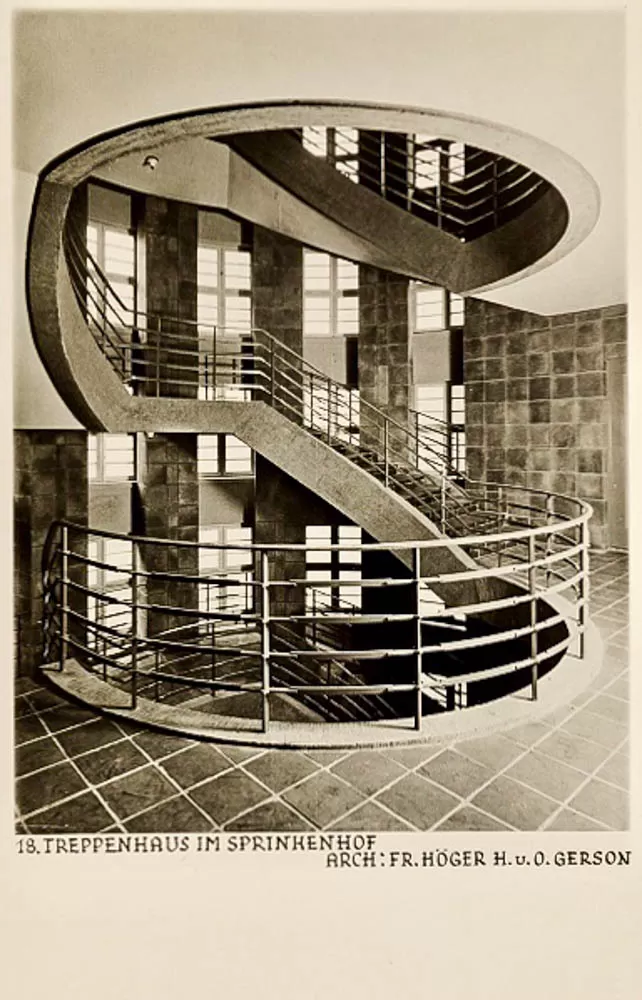
Extension
From 1930 to 1932, the original building was extended to the west by a slightly offset wing according to plans by Fritz Höger. Hans Gerson had already died in 1931 and Oskar Gerson was no longer allowed to practice his profession.
In the east, another wing was built from 1939 to 1943, also based on plans by Fritz Höger, which burned out soon after its completion.
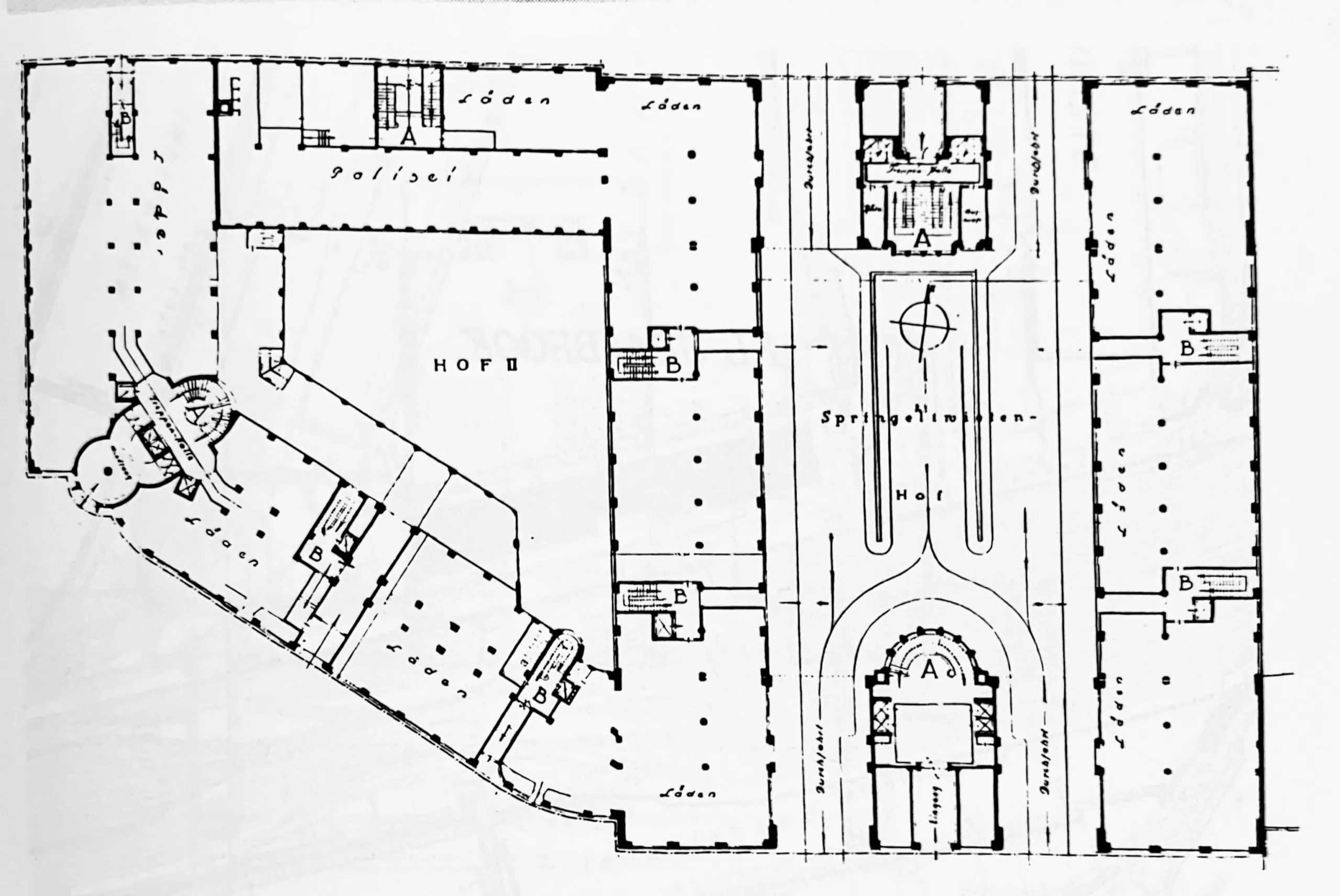
Floor Plan Sprinkenhof (without East Wing)
Sprinkenhof AG
The two companies carrying out the construction, Philipp Holzmann AG and Friedrich Holst, founded a Geschäftshaus Altstadt AG while the building was still under development to manage their new office building.
The company became the property of the City of Hamburg in 1935 and was renamed Sprinkenhof AG a few years later.
Destruction and Reconstruction
Following the partial destruction of the building in 1943, reconstruction took place between 1947 and 1948.
Starting in 1950, the city transferred all of its commercially leased properties to Sprinkenhof AG for management.
From 1999 to 2002, a reconstruction with extensive renovation took place.
In 2014, the corporate form was changed from AG to GmbH. Today, the Hanseatic City uses the management company, which is integrated into the city-owned holding company HGV, for almost all real estate transactions.
At the end of 2007, Sprinkenhof managed a total of 1874 predominantly municipal properties, including the Hamburg State Opera, the Schmidt Theater or the Travel Pavilion on Jungfernstieg.

